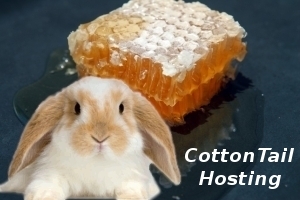Periodically, the colony determines that a new queen is needed. There are three general triggers.
- The colony becomes space-constrained because the hive is filled with honey, leaving little room for new eggs. This will trigger a swarm where the old queen will take about half the worker bees to found a new colony, leaving the new queen with the other half of worker bees to continue the old colony.
- The old queen begins to fail. This is thought to be recognized by a decrease in queen pheromones throughout the hive. This situation is called supersedure. At the end of the supersedure, the old queen is generally killed.
- The old queen dies suddenly. This is an emergency supersedure. The worker bees will find several eggs or larvae in the right age-range and attempt to develop them into queens. Emergency supersedure can generally be recognized because the queen cell is built out from a regular cell of the comb rather than hanging from the bottom of a frame.
Regardless of the trigger, the workers develop the larvae into queens by continuing to feed them royal jelly. This triggers an extended development as a pupa.
When the virgin queen emerges, she is commonly thought to seek out other queen cells and sting the infant queens within and that should two queens emerge simultaneously, they will fight to the death. Recent studies, however, have indicated that colonies of Apis mellifera may maintain two queens in as many as 10% of hives. The mechanism by which this occurs is not yet known, but it has been reported to occur more frequently in some South African subspecies of Apis mellifera. Regardless, the queen asserts her control over the worker bees through the release of a complex suite of pheromones called queen scent.
After several days of orientation within and around the hive, the young queen flies to a drone congregation point – a site near a clearing and generally about 30 feet (9.1 m) above the ground where the drones from different hives tend to congregate in a swirling aerial mass. Drones detect the presence of a queen in their congregation area by her smell, and then find her by sight and mate with her in midair (drones can be induced to mate with “dummy” queens if they have the queen pheromone applied). A queen will mate multiple times and may leave to mate several days in a row, weather permitting, until her spermatheca is full.
The queen lays all the eggs in a healthy colony. The number and pace of egg-laying is controlled by weather and availability of resources and by the characteristics of the specific race of honeybee. Honey bee queens generally begin to slow egg-laying in the early-fall and may even stop during the winter. Egg-laying will generally resume in late winter as soon as the days begin to get longer. Egg-laying generally peaks in the spring. At the height of the season, she may lay over 2500 eggs per day – more than her own body mass.
The queen fertilizes each egg as it is being laid using stored sperm from the spermatheca. The queen will occasionally not fertilize an egg. These eggs, having only half as many genes as the queen or the workers, develop into drones.




